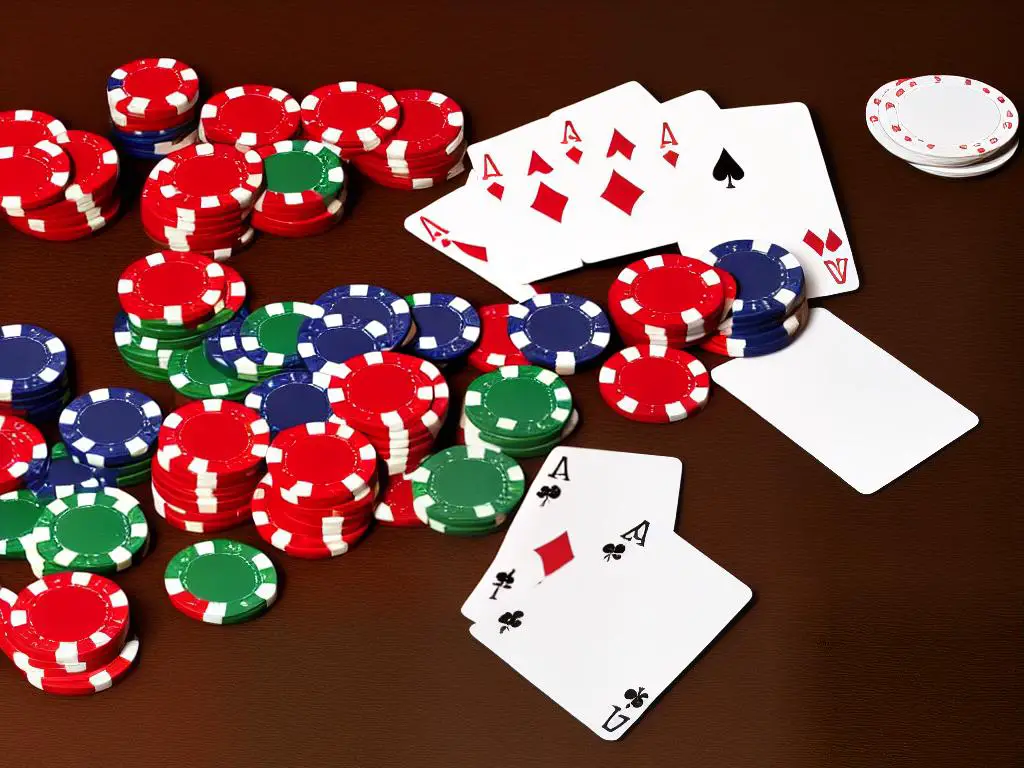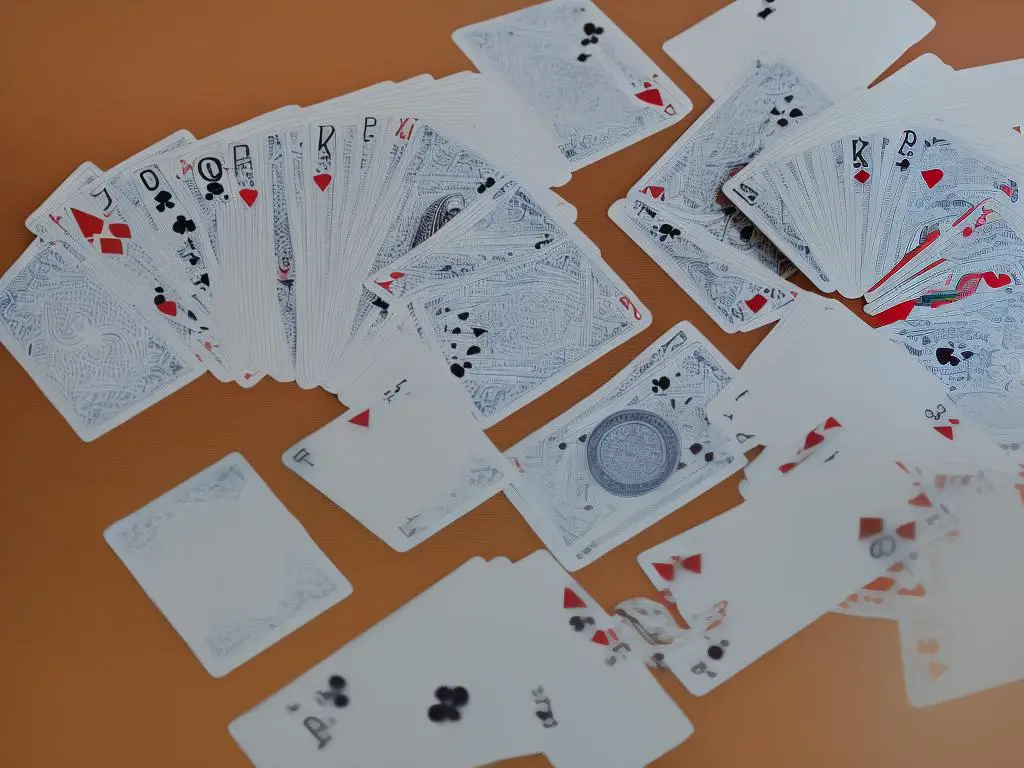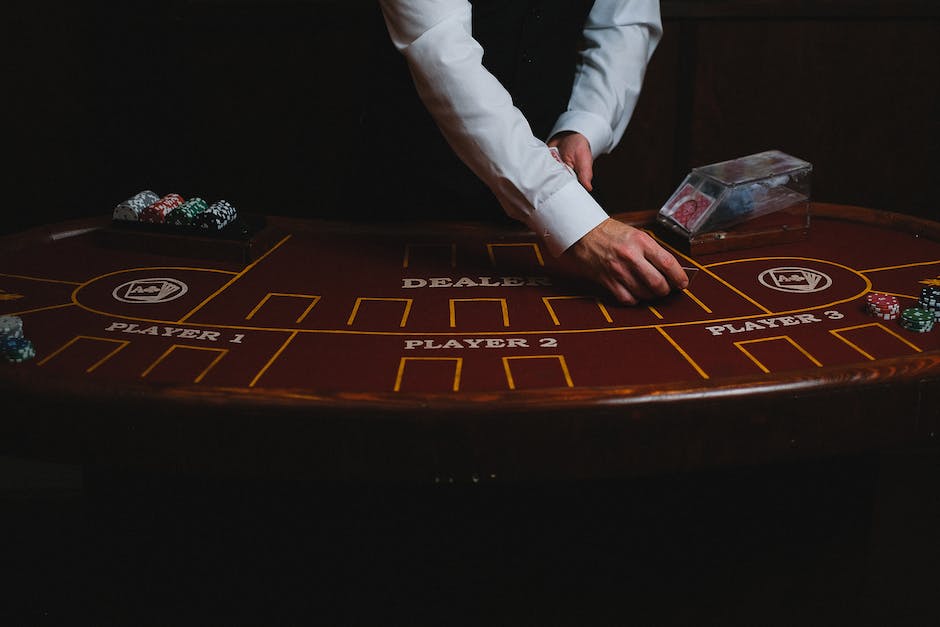Card Counting in the game of Blackjack, despite being frowned upon in casinos, remains a compelling strategy for many seasoned players looking to gain an edge. To proficiently count cards, however, it’s critical to fathom the foundational elements of the game itself. From grasping the basic terminologies such as ‘hit’, ‘stand’, ‘split’, and ‘double down’, to understanding the intricate rules and strategies, a potential card counter’s journey begins here. Beyond that, deciphering the card values and their impact on the game’s progression is incredibly critical. The road gets more complex yet intriguing as you delve into learning different counting systems like the Hi-Lo system, the KO system, and the Omega II system, each with their own unique pros and cons. Ultimately, for those who wish to practice this art without inviting the ire of casinos, mastering the skill of counting subtly and avoiding detection becomes pivotal.
Understanding Blackjack Basics
Blackjack is a skill-based card game that includes chance but also tactics and strategies. It’s essential to understand the basic rules and terms before mastering techniques like card counting.
Game Objective
The objective in blackjack is to have a hand total as close to 21 as possible and closer to 21 than the dealer’s hand, without going over (“busting”).
Card Values
Cards from 2-10 retain their face values. Kings, Queens, and Jacks (the face cards) are each worth 10 points. The Ace is the power card and can either be valued at 1 or 11.
Gameplay Start
At the beginning of each hand, players receive 2 cards, typically both are face up. The dealer receives two cards as well, one face up (the “up card”) and one face down (“the hole card”).
Deciding on the Next Move
After receiving the initial two cards, each player gets a turn to improve their hands by drawing more cards (“hitting”) or retaining their current total (“standing”).
Hit
To ‘Hit’ is to ask for another card. You can signal to hit by tapping the table with your finger or placing the finger towards you. You may hit multiple times but remember, if your total exceeds 21, you’ll “bust,” and the dealer wins regardless of their hand.
Stand
To ‘Stand’ is to hold your total and finish your turn. Standing occurs when you are satisfied with your card total or believe that the next card might cause you to bust. To signal a stand, you generally wave your hand horizontally over the table.
Split
If your initial two cards are of the same denomination, you may decide to make a second bet equal to your first and split the pair, using each card as the first card in a separate hand. For instance, if you’re dealt two 8’s, you might choose to split. Note that the rules regarding split can vary slightly by casino.
Double Down
Doubling down means you’re doubling your original bet after receiving your first two cards. You then receive one card only on this hand. It is a beneficial play when the player believes their single card total plus the subsequent card will be a strong hand against the dealer’s.

Learning about Card Values
Understanding Card Values in Blackjack for Card Counting
The standard blackjack deck consists of 52 cards, divided into four suits: hearts, diamonds, clubs, and spades. Each suit contains thirteen cards: Ace through 10 and the face cards, King, Queen, and Jack.
Learn Basic Card Value Assignments
Card counting in Blackjack usually operates on a simple system. In most systems, such as the Hi-Lo system, low cards (2-6) are assigned a value of +1, neutral cards (7-9) are given a value of 0, and high cards (10, Jack, Queen, King, Ace) are given a value of -1.
How the Count Works
The system works by keeping a rolling count of the cards as they’re played and adjusting your bets accordingly. For example, a deck heavy in high cards (10, Jack, Queen, King, Ace) reduces the house edge, and a deck heavy in lower cards increases it. Thus, when the count is high (+), you should increase your bets, and when the count is low (-), you should decrease your bets or even refrain from betting.
Mastering the Card Counting Process
Start by taking a deck of cards and flipping them over one at a time, adding up the count as you go. This means that for 2-6, you add one, for 7-9 you add zero, and for 10 and face cards you subtract one. For example, if you turn over a 4, 7, and King, your count would be +1 (from the 4), 0 (from the 7), and -1 (from the King) which totals at 0.
It can be very helpful to associate specific counts with how much you should bet. For instance, at a count of +1, you might want to bet the table minimum. At a count of +3, you might want to double your bet. At a count of +5, you might want to triple your bet, and so on.
Once you’re comfortable with counting individual cards, the next step is to practice counting down an entire deck. This can help you gauge how quickly you can count in real casino conditions. Try to go through the deck as quickly as possible, keeping your count accurate.
After you’ve mastered counting down a deck, try to do so with distractions, such as a TV in the background or while having a conversation. This can simulate the kind of environment you’ll encounter in a real casino and help you get used to maintaining focus.
Remember, casino staff are trained to spot card counters, so the goal is to perform these calculations in your head without apparent effort. This becomes easier with lots and lots of practice!
Please note that card counting isn’t encouraged by casinos and, while it’s not illegal, casinos reserve the right to refrain from dealing to you if they suspect you’re counting cards. Please bear this in mind before deciding to use these techniques.

Mastering Counting Systems
Understanding the Basics of Card Counting
1. Research Card Counting in Blackjack: Before you delve into the specifics of different counting systems, understand the basics of card counting in blackjack. Get a general understanding of why it is essential in the game and how it alters the odds in favor of the gambler.
2. Learn Basic Blackjack Strategies: Counting cards will not be sufficient if you are unfamiliar with the basic strategies of blackjack. Make sure you understand when to hit, when to stand, and when to split or double down.
Learning Different Card Counting Systems
3. Research Various Card Counting Systems: Examine the different systems of card counting, including the Hi-Lo system, the KO system, and the Omega II system. Each method has its advantages and disadvantages, differing in complexity and accuracy.
4. Hi-Lo System: In this system, each card is given a value. Cards 2-6 are worth +1, 7-9 are worth 0, and 10-Ace are worth -1. As cards are revealed, keep a running count based on their assigned values.
5. KO System: The KO (Knock-Out) system is similar to the Hi-Lo system but with a slight variation. In this method, the seven is also given a +1 value, making it easier but slightly less accurate.
6. Omega II System: This is a more complicated system where different cards have different values. Cards 2, 3, and 7 are worth +1, 4, 5, and 6 are worth +2, 8 and A are worth 0, 9 is worth -1, and 10 is worth -2. This system gives a more accurate count but is harder to implement.
Mastering Your Selected System
7. Choose the Right System: Choose a system based on your comfort level and which one you find the easiest to remember. If you are just starting out, it is recommended to start with the Hi-Lo system due to its simplicity.
8. Practice in Private: Practice the counting system you have chosen by using a deck of cards at home. Keep practicing until you can go through the entire deck accurately.
9. Speed Up Your Count: As you practice, work on increasing your speed. The faster you can keep an accurate count, the better off you will be in an actual game.
10. Practice with Distractions: Casinos are noisy places. Practice counting cards with various distractions around so that you get used to maintaining focus in a crowded environment.
11. Maintain Your Composure: Casinos are always on the lookout for card counters. Part of mastering a counting system is learning to make your counting seem natural. Avoid raising suspicion by remaining calm and composed, making your bet changes seem accidental.
Remember, while card counting can give you an edge in blackjack, it does not guarantee a win. It’s a skill that requires practice and patience, honed over time. Also, it’s essential to note that card counting is frowned upon by casinos and can lead to you being banned if caught.

Avoiding Detection
While card counting is not illegal, casinos disapprove of the practice because it disrupts the house edge, which is how they make their profits. If a casino suspects you are counting cards, they may ask you to leave or potentially ban you. Here’s how to count cards subtly and avoid detection while playing blackjack.
Maintain a Low Profile
Generally, people who draw attention to themselves are more likely to be scrutinized. The same applies in casinos, especially at the blackjack table. Here are some tips to stay under the radar:
- Don’t bet wildly: Large swings in your betting pattern can signal to the casino that you’re counting cards. Try to maintain consistent betting amounts. Only increase or decrease your bet slightly as the count changes.
- Don’t stay at one table too long: Spending an excessive amount of time at the same table can arouse suspicion. Move to different tables once in awhile.
Blend In With Other Players
Try not to stand out from other players. It’s best to blend in rather than to appear as if you’re using an advanced strategy. Here are some ideas:
- Participate in small talk: Engage in casual conversation with fellow players and the dealer. This makes you seem like a typical player, not someone focused solely on the game.
- Tip the dealer: This isn’t to bribe the dealer but rather to further blend with the other players. Most regular players tip the dealer from time to time. Be mindful to do the same.
Control Your Emotions
- Stay calm: If you are nervous, it may be noticeable to casino staff. Practice counting cards at home until you can do it naturally without giving off any signs of nervousness.
- Don’t celebrate excessively: If you’ve counted correctly, you might have some big wins. Avoid the urge to celebrate too enthusiastically. This could draw unnecessary attention to you.
Limit Alcohol Consumption
Drinking while counting cards can hinder your abilities and control. It may also lead to overt and suspect behavior. Sip slowly or stick to non-alcoholic beverages, particularly when you need to keep your focus sharp.
Conclusion
Remember, while card counting can improve your chances of winning at blackjack, it’s not a guaranteed method for success. The most important factor is not getting caught. By maintaining a low profile, blending in with other players, controlling your emotions, and limiting alcohol consumption, you can reduce the chances of being detected. Happy playing and good luck!

With comprehensive understanding and strategic practice, counting cards in Blackjack can offer a significant advantage. However, discreet use of this strategy is equally important to avoid potential repercussions from casinos. Understanding Blackjack basics, learning card values, and mastering counting systems must be performed in unison to excel at this silent game of numbers and probability. However, it’s worth bearing in mind that while these techniques can tilt the odds slightly in a player’s favor, the essence of Blackjack, like any other game of chance, is intrinsically rooted in unpredictability and excitement that shouldn’t necessarily be overshadowed by the pursuit of strategic supremacy.
FAQ – Mastering Card Counting in Blackjack
Q: What is card counting in Blackjack?
A: Card counting is a strategy used to track the ratio of high and low cards in a Blackjack deck, which can help players make more informed betting decisions.
Q: Can card counting give me an advantage in Blackjack?
A: Yes, card counting can provide players with an advantage by identifying favorable situations for placing higher bets and adjusting playing decisions accordingly.
Q: Is card counting legal in casinos?
A: While card counting is not illegal, casinos frown upon it and may take countermeasures, such as reshuffling more frequently or banning players suspected of card counting.
Q: How can I learn to master card counting in Blackjack?
A: Our blog provides valuable insights, techniques, and practice tips to help you improve your card counting skills and increase your chances of winning.
Q: Can I use card counting in online Blackjack games?
A: Online Blackjack games often use random number generators, making card counting ineffective. However, it can be applied in live dealer Blackjack games.
Q: Does card counting guarantee consistent wins in Blackjack?
A: No, card counting does not guarantee consistent wins. It is a strategy that can improve your odds over time but does not guarantee specific outcomes in individual hands.
Q: Are there different card counting systems?
A: Yes, there are different card counting systems, such as Hi-Lo, KO, and Hi-Opt, each with its own complexities and effectiveness. Our blog discusses some of these systems.
Q: Can I practice card counting without playing real money games?
A: Absolutely! Our blog offers suggestions and resources for practicing card counting without risking real money, including mobile apps and online simulators.
Q: Are there other strategies to master in Blackjack?
A: Yes, Blackjack involves various strategies beyond card counting, including basic strategy, bankroll management, and understanding table rules. Our blog covers these topics as well.
Q: How can I stay updated on advanced Blackjack strategies and techniques?
A: Stay connected with CardsAndBoards.net by subscribing to our newsletter or following us on social media for updates on Blackjack and other card and board games.